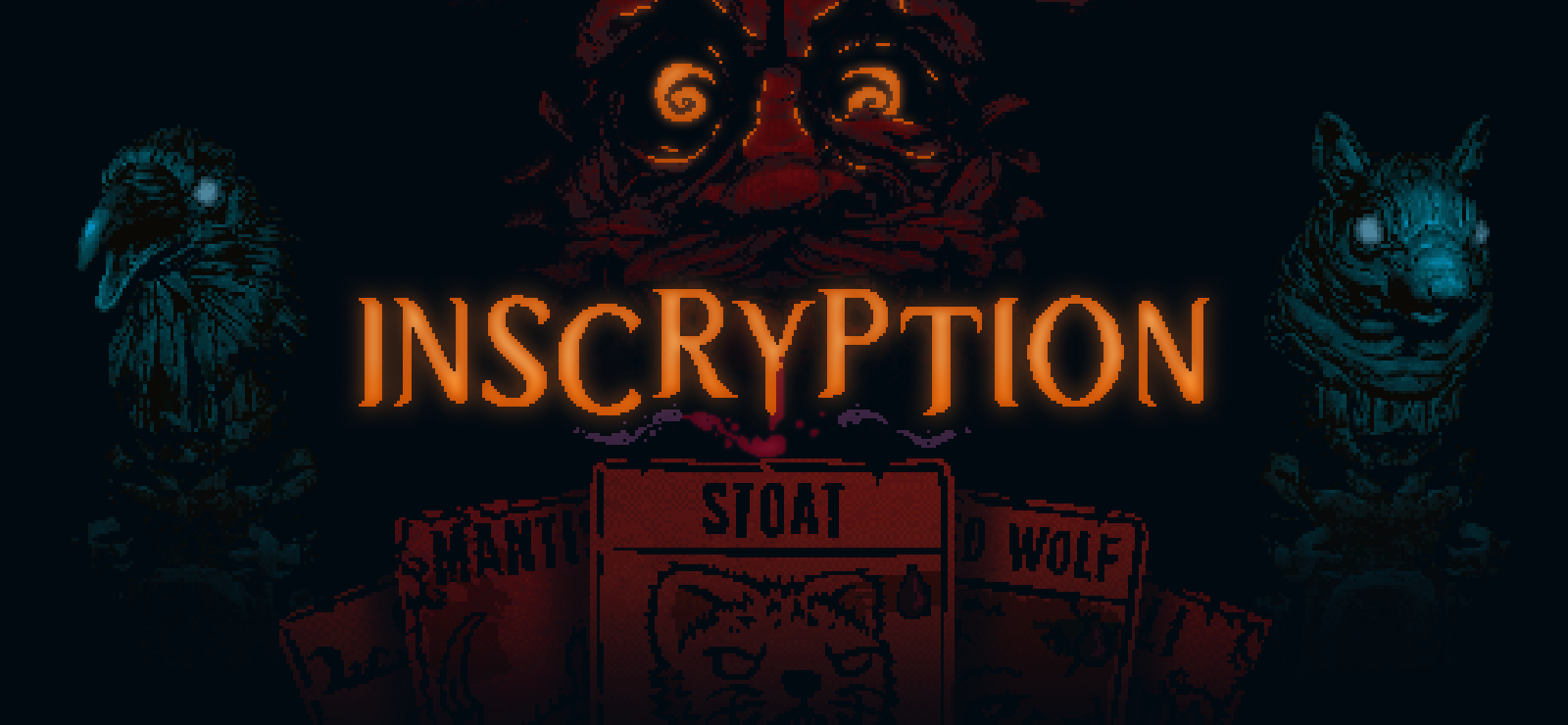Inscryption is a beast of many faces that both rewards and punishes any attempt to review it. There is a rich complexity beneath the simplistic surface, and so much of the experience of playing Inscryption is based on discovery, on surprise, on revelation. You might have figured Inscryption out, and you are allowed to be satisfied with your understanding of the game for a half hour or so, before it becomes something else once again and you realise all your assumptions were wrong.
The cycle of surprise leading to comprehension followed by subversion repeats several times over. The game never allows you to get comfortable for quite long enough before offering some new twist, and yet every twist is hinted at, telegraphed even, well in advance. One of the biggest surprises at the end of the first act is laid bare within the first loading screen after installation, a clue long forgotten until you reach the surprise itself and are suddenly able to connect the dots.

But I have already revealed too much. My sincerest recommendation is that you go and play Inscryption now, and come back to this review once you have finished the game. It is not a particularly lengthy game – I had completed it in fourteen hours, and more experienced deck-builders might find it quicker. Go and play Inscryption, avoid any walkthrough, any Reddit thread, ignore any content with titles like “Inscryption EXPLAINED!” or “Every INSCRYPTION SECRET Revealed!” and instead, immerse yourself in the atmosphere of confusion and eerie self-awareness that is so characteristic of this particular game.
Have you played the game yet?
I don’t believe you, so I’m still not going to give anything away.
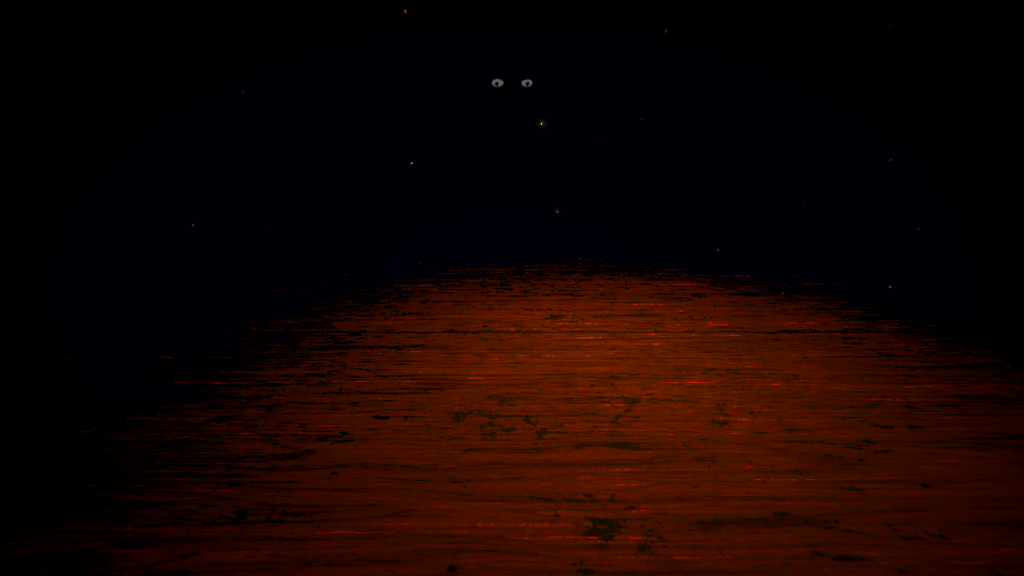
280 words into the review and I’ve barely even mentioned the game’s mechanics. Inscryption is a roguelike deck-building game with some unique mechanics that are new to me, although they may be familiar to more genre-savvy players. You have a deck of woodland creatures, each with an attack power and a health level. Their attack power is how much damage they can do, and their health level is how much damage they can take.
If a creature attacks and there is no opposing creature to block the damage, then the player will be hurt. Between the two opponents is a weight scale – the more damage a player takes, the further the scale tips towards them. If it tips all the way, the player loses that battle. Even when close to defeat, a good play can tip the scale all the way back towards your opponent – likewise, more than one blunder in a row and you will snatch defeat from the jaws of victory.
The scale mechanic may simply sound like hitpoints with extra steps, but it prevents any match from out-staying its welcome. In matches where you outclass your opponent, you do not have to endlessly hit the “next turn” button to whittle away a high number of hitpoints. Likewise, should your luck fail and you find yourself at the mercy of a low-powered opponent, you are not forced to endure a slow death of a thousand cuts whilst your own hitpoints trickle to nil. Most matches have a feeling of danger, and those matches that have already been won or lost are quickly finished.
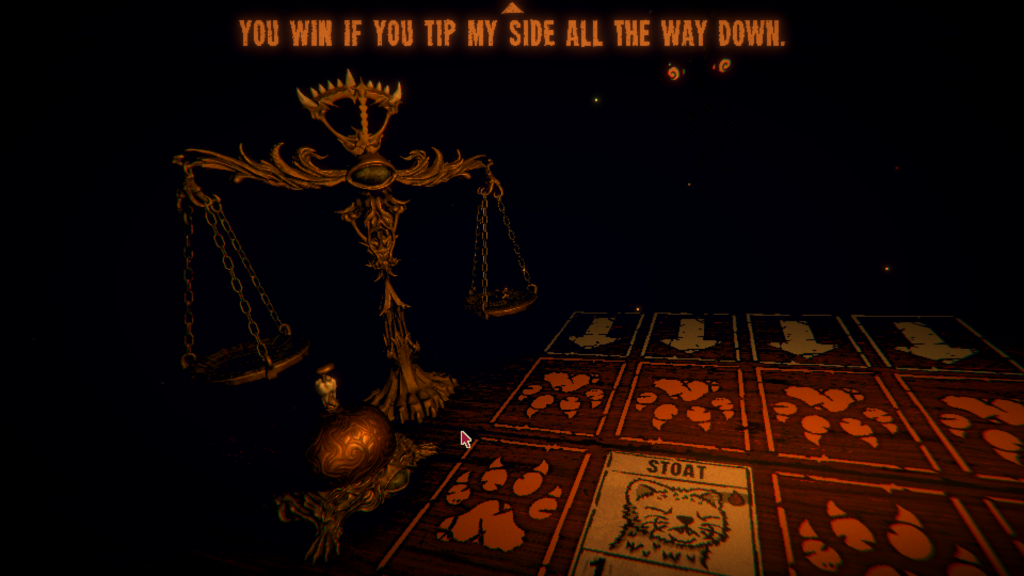
In addition to attack power and health, some creatures also have a “sigil”. A sigil is a special effect of some kind, usually something relatively simple – but complexity can emerge from the simplicity, and understanding the power of each sigil is key to success. Opportunities arise throughout the game to acquire more cards, and some of the most useful creatures are those with poor stats but a good combination of abilities. Once you get to grips with the emergent complexity of the game’s mechanics, you will find the deck-building quite satisfying and rewarding.
The roguelike elements keep everything fresh. A defeat will generally mean a restart, but each restart introduces new elements or switches previous elements around. You may well experience a “favourite run” – I know I did – where the stars align and all your buffs and card acquisitions synergise wonderfully. This concept is core to the roguelike genre, but Inscryption uses it particularly well to give each new run a flavour all of its own.
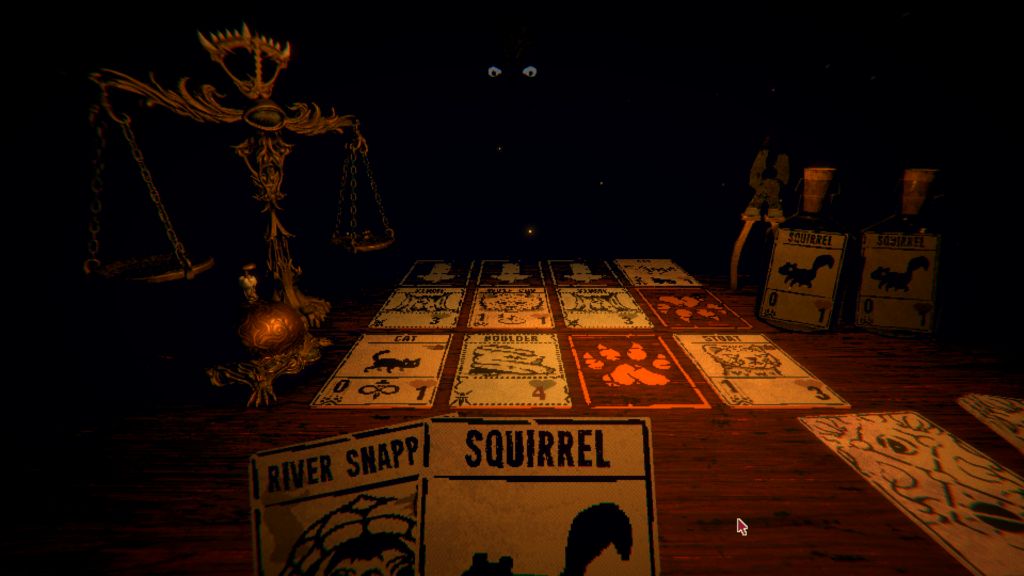
I already feel like I have betrayed the game by revealing as much as I have. By now, you hopefully know if this game is for you or not, but just to make sure, I will offer a little guidance:
If you like the sound of a game that combines a collection of simple concepts to build something beautiful and complex, then you should play Inscryption. Likewise, if a game that uses low-fi aesthetics to craft an intense, dark atmosphere and invokes dread with a single flickering light sounds enticing, then you should play Inscryption. If you think you can handle having all of your expectations subverted in genuinely clever, original ways, then you should play Inscryption.
You should not play Inscryption if you like to immerse yourself in a satisfying, yet static, game mechanic for hours at a time – Inscryption constantly evolves, and you must either evolve with it, or perish. You should not play Inscryption if you lack curiosity, because the greatest rewards come from pushing buttons that look like they ought not to be pushed. You should not play Inscryption if you do not wish to be challenged: the game mechanics themselves require some thought and skill, and the game itself demands that you render yourself vulnerable to the unexpected.
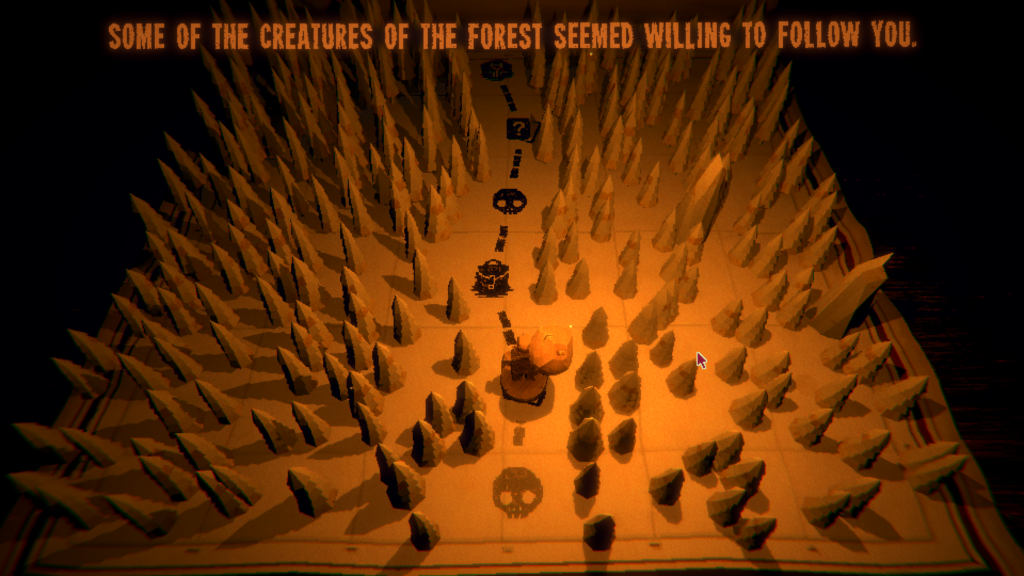
Inscryption is a masterpiece. It is brief, it is unforgiving, it is deeply compelling and full of wonder. There are far worse things you could do with your money and your time than to play Inscryption, and to play it through, and it will definitely redefine for you what a computer game can be.

